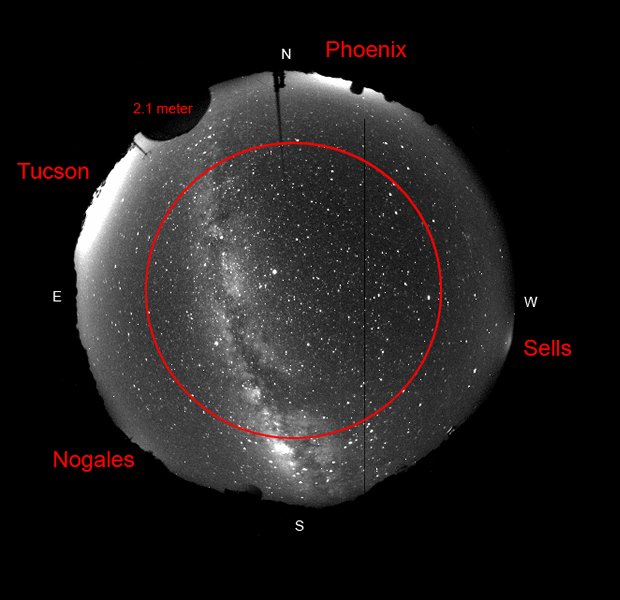
Controlling Light Pollution

New measurements of the NSF-funded Kitt Peak National Observatory near Tucson, Ariz., show that sky brightness has remained remarkably constant over the past 20 years, despite the area’s rapid population growth.
The study demonstrates that with a conscientious effort, human-caused light pollution can remain constant, despite large population growth in cities.
Shielded outdoor lights, required by Tucson and surrounding Pima County ordinances thanks to the efforts of both citizens and astronomers, keep the area skies dark for all to enjoy. The measures control wasted light, suppress the sky glow caused by outdoor lights, save large amounts of energy and preserve the value of the Kitt Peak National Observatory site for advanced astronomy research.
The brightness of the night sky over southern Arizona’s observatories is not an academic issue: Astronomy research in Arizona is built on a $1-billion infrastructure and generates more than $250 million in economic benefit each year. This revenue equates to what would be gained by bringing the Super Bowl and all of its associated economic activities to Arizona at least every other year.
Kathryn Neugent and Philip Massey of Lowell Observatory measured the night sky brightness at Kitt Peak in 2009 and 2010 and compared their results to those Massey and his collaborators made 10 and 20 years ago. They found that Kitt Peak is just as dark now as it was 20 years ago.
During the past 20 years the populations of Pima and Maricopa Counties have nearly doubled.
























